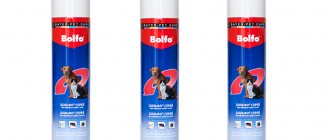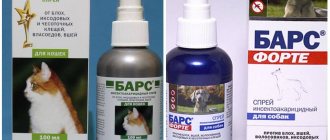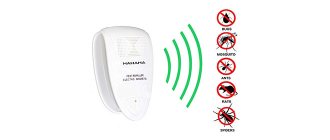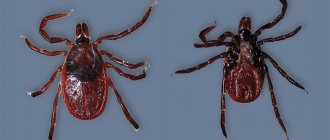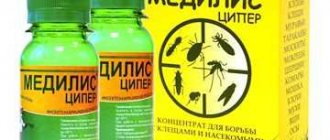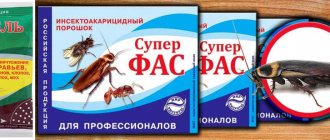Tick vaccination for dogs. Are there vaccinations against ticks? Vaccine as a remedy against infectious diseases. What are vaccinations for and what is the mechanism of action. Tips and recommendations from veterinarians. Rules for injections. Mandatory rules for vaccination.
Every dog owner wants to provide protection to their pets and protect them from attacks by dangerous parasites. Tick bites are very dangerous for animals, since there is always a risk of contracting severe infectious diseases. To minimize the likelihood of infection, veterinary clinics now provide anti-tick vaccinations for dogs.
Next, we will find out how effective and reliable such protection is, get acquainted with the opinions of veterinarians and their reviews, and also learn about all the advantages, features and possible disadvantages of this form of prevention.
Are pets vaccinated against parasites?
In fact, there is no vaccination against ticks; these preventive measures are the introduction of a vaccine to the animal, which protects the dog from contracting infectious diseases carried by ectoparasites.
It does not save you from the tick attack itself and does not in any way affect this process. Its action is aimed at preventing the consequences that may arise from an attack by an infected individual.
To protect the animal from attack by parasites, there is a fairly large assortment of various drugs and means. You can use sprays, collars, drops, tablets, the action of which is aimed specifically at protecting the pet.
It is worth noting that no one remedy, just like vaccination, can guarantee 100% effectiveness. Only an integrated approach can minimize the existing risk of infection and development of infection.
Collars
Tick collars can be effective, but they may not be useful for a dog that likes to swim, as they become less effective once they get wet. Read the instructions carefully to find out how long the collar remains active.
When installing the collar, make sure it is a snug fit, but there is enough room to fit two fingers between it and your pet's neck. They usually contain carbamates and pyrethroids.
A recent product called Preventic, available as a collar, has proven effective in controlling ticks on dogs. It contains an ingredient called Amitraz, which kills the tick before it can attach.
Some dogs have a negative reaction to the collar, so it's best to ask your veterinarian about this first and observe your dog carefully when you first use it. Additionally, the collar is virtually ineffective at killing fleas. No matter what method you decide to use to protect your dog from ticks, talk to your veterinarian first. They can help you make informed decisions about the appropriate treatment.
How do you protect your dog from ticks? Do you have any particularly effective methods?
Should dogs be vaccinated?
Everyone knows how dangerous the bite of an infected tick can be; they can infect an animal with encephalitis, piroplasmosis, Lyme disease and other equally serious diseases. Severe forms of diseases can lead to death, so preventive measures are taken with all responsibility.
Regarding vaccinations and whether to give such an injection to your dog, veterinarians recommend these measures, since they can significantly alleviate the course of the disease and avoid severe forms. Vaccinated animals tolerate the disease much easier, there are no complications or dangerous consequences.
Types of vaccines
There are several types of vaccines, but regardless of the type, they all have the same mechanism of action. These drugs contain a minimal amount of pathogenic intracellular organisms, which contribute to the development of a protective mechanism.
The following vaccines are available:
- Nobivac Piro.
- Eurican Piro.
- Pirodog.
Nobivak
This drug is developed by Intervet. Made in the Netherlands. This substance contains strains of Babesia rossi and Babesia A. This substance helps to maximize the immune response when exposed to intracellular parasites.
Suitable for use in puppies from the age of 5 months and adult dogs. It is prohibited to combine it with other types of vaccinations and medications for two weeks before and after vaccination.
Eurikan
This drug is used as a prophylactic against encephalitis. The composition contains red blood cells that are infected with the Babesia canis strain, and they are additionally treated with gamma rays. These microorganisms cause the development of piroplasmosis, which is very dangerous for the life of the animal.
The development and production of this vaccine belongs to the French company Merial. Known to be safe for dogs and not causing any side effects. Two weeks after the injection, immunity to microorganisms begins to develop.
The effect of the drug lasts 6 months after vaccination. The procedure is carried out in two stages, it is necessary to give 2 injections with a break of 3-4 weeks.
In some cases, the animal may experience a decrease in appetite after the injection, and the dog may also become lethargic. These symptoms do not require therapeutic treatment and quickly go away on their own.
In rare cases, pets may experience allergic reactions; in case of such manifestations, it is necessary to contact a veterinarian who will prescribe treatment, most often it consists of taking antihistamines.
It is allowed to give injections during the period of vaccination against leptospirosis and rabies, but only if they are given in different areas of the body and only if these are 2 different injections.
Pirodog
This drug is a complete analogue of the previous version. It has the same mechanism of action, indications and contraindications.
Period of increased vulnerability
Most of all, owners whose dogs are often in the forest and plantings are most afraid of piroplasmosis. Over the past three years, the number of animals bitten by ticks has increased. It's not just hunting and service dogs that are at risk. A cute decorative dog walking with you in the park may also be attacked by an insidious insect. And it’s not a fact that you will immediately find a tick on the dog’s body. These inconspicuous insects often go unnoticed by the human eye. A guess about a pest attack may visit the owner when the dog begins to feel unwell.
It may be presumptuous to say that your dog does not need a vaccine against piroplasmosis. The vaccination procedure is not complicated. The specialist gives the puppy an injection at the withers. The veterinarian will explain to you what needs to be done during the period of increased vulnerability of the four-legged prankster. The dog needs antihistamines for three days after administration of the drug.
You should treat your pet especially carefully in the first few days after his “acquaintance” with the vaccine. Some animals may experience redness at the injection site. The development of swelling in the problem area is also possible. There is no need to panic over this. The swelling goes away on its own within two to three days.
While the dog’s immunity is going through the correction stage, you should protect your dog from the following situations:
- drafts;
- long walks on hot days;
- traveling to unfamiliar places;
- gastronomic experiments.
The weakness and loss of appetite that occurs in some puppies after vaccination goes away without medication. You should pay attention to what your dog eats. The animal's food must be complete and high in calories. You should not give your dog treats from the owner's table.
Cost of injections
Regarding the cost, all three types of vaccines belong to the same price category. But it is worth considering that two injections are required, which means 2 doses are purchased.
Also, do not forget that injections are carried out only in veterinary clinics and independent use is prohibited.
Therefore, the procedure itself will also be paid. So, regarding the price of one dosage, the average cost is about 2,500 rubles. Additionally, an appointment with a veterinarian (primary), which averages 600 rubles, the procedure itself is about 800 rubles, and taking biomaterial for analysis is 400 rubles.
Powder
To eliminate fleas, in addition to shampoos, drops, and sprays, you can use powder. It is easy to use and works well. It is enough to apply the product to the surface of the coat and wait a few minutes, and then it is removed. It is applied 2-3 times a week.
The following flea powders for dogs can be purchased in many veterinary pharmacies:
- Trixie . The anti-flea product is manufactured in Germany; one package contains 100 grams of product. When using, avoid contact with eyes and mouth. Not for use on sick dogs, and also cannot be combined with other insecticidal agents;
- Barrier . Since the product can retain its properties for a long time, it can be used for one and a half years. The composition contains an active substance that causes paralysis and subsequent death in fleas and ticks. Must be used in accordance with the instructions;
- Golden Defense. A good remedy that eliminates fleas, ticks, and also protects against subsequent parasitic attacks. It is not recommended to use more than once a week. Should not be used on old, pregnant, lactating or sick dogs.
Guarantee of protection
One of the most common questions asked by dog lovers is whether vaccination provides 100% protection against piroplasmosis.
Unfortunately, today there is no vaccine in the world that could guarantee complete protection against infection with these dangerous diseases.
But despite this, veterinarians still recommend using these preventive measures, since they are the most effective today.
Such an injection allows you to minimize the likelihood of developing severe consequences, which in this case is quite an important point.
Side effects
Like any other injection given to a dog, it can cause swelling in the injection area, there is nothing dangerous or terrible about it, such swelling goes away on its own.
Each organism tolerates the drug individually, and each person may have their own symptoms. Some dogs may experience a slight increase in temperature, which is also a normal symptom.
But an allergic reaction for a dog is dangerous, since the development of anaphylactic shock is observed, in which case veterinary care and mandatory treatment are mandatory.
Learn about essential drugs in animals
- Dirofen for cats
- Vetoma for cats
- Use of multifel-4 in cats
- Fosprenil in cats
- Kotervin
- Cat Bayun in cats
- Feliferon in cats
- Stronghold in cats
- Milbemax for cats
- Information about the drug gamavit
- Instructions for the use of spirovet in animals
- Instructions for tiamulin
- Sevaxel
- Thiam-oxy
- Tetravet
- TAF 25%
- Tsefkin
- Intramycin
- Application of inotil
- Instructions for use of cobactan in dogs
- Colisid for animals
- Marbox for animals
- Inosel
- Oxytetra for animals
^Top
special instructions
These activities can only be carried out in a veterinary clinic under the supervision of a veterinarian. In addition, after the injection, the doctor observes the animal for half an hour. This allows you to provide first aid in case of an allergic reaction. If there are no symptoms and nothing bothers the dog, it goes home with the owner.
After the injection, the dog must be given antihistamines prescribed by the doctor for 3 days. Also, after vaccination, you should not physically stress the animal, rest or eat adequate food.
The diet should consist of complete and balanced nutrition. Remember that any vaccination puts a strain on the animal’s body and you should strictly follow the doctor’s recommendations.
Question answer:
Piroplasmosis in dogs: what to do?
At the first symptoms, consult a doctor and donate blood to be tested for piroplasmosis in your dog. If the dog is sick, adhere to the prescribed treatment regimen.
Can a pet cure babesiosis on its own?
No, if the pet is not provided with qualified medical care, the dog may die.
How does an animal become infected with babesiosis?
A dog becomes infected with piroplasmosis after a tick bite. The infection is also transmitted through blood transfusion, after a fight with infected dogs, from mother to puppies.
How long does it take for piroplasmosis to appear in dogs?
Signs of piroplasmosis in dogs after a tick bite may appear the very next day, but on average the incubation period lasts 5-7 days. Sometimes it lasts up to 3 weeks.
Will vaccination prevent piroplasmosis?
Vaccination against piroplasmosis protects the dog in 75% of cases. But vaccination is necessary: if the pet gets sick, the disease will be easier.
Advantages and disadvantages of whey
The main advantage is milder forms of the disease when infected. The dog not only tolerates the disease itself more easily, but also minimizes the likelihood of severe complications. In some cases, the disease may be completely asymptomatic, and in others it will pass at a mild stage.
Of course, it is not without its drawbacks. Some experts question the effectiveness of the drugs. The fact is that in these diseases, immunity does not play the most important role, since it only reduces the negative impact of toxins that are released during piroplasmosis, and the vaccine does not affect the focus itself. In addition, the disadvantages include high cost.
Acute form of piroplasmosis in dogs: symptoms and signs
The incubation period of piroplasmosis in dogs usually lasts from 5 to 7 days, less often it extends to 3 weeks. If you miss the signs of babesiosis in dogs after a tick bite, the pet will die in a few days due to breathing problems, anemia, and kidney failure.
Signs of piroplasmosis in dogs after a tick bite
With babesiosis, urine becomes the color of beer. A sick pet refuses to eat, apathy and increased fatigue appear. The temperature during dog piroplasmosis first rises to 40-41°C. Then it can drop to 37°C, before dying it can drop to 36-35°C.
Other symptoms of babesiosis in dogs at the acute stage:
- increased heart rate and breathing;
- vomiting blood;
- yellowing of the mucous membranes, sclera of the eyes;
- greenish or yellow stool.
Symptoms of liver and spleen damage
2-3 days after infection, anemia develops due to the breakdown of red blood cells. The urine becomes dark because it contains bilirubin, a toxic pigment produced by the breakdown of red blood cells in the spleen. Usually it is processed by the liver and sent into bile, in which it helps digest food. It then ends up in the stool and comes out, giving it a dark color.
With babesiosis, the liver cannot cope with the task, so bilirubin goes into the blood and poisons the body. The kidneys partially filter it out and remove it from the body in urine, which is colored by bilirubin the color of beer.
Thus, the liver and spleen are greatly affected by piroplasmosis. Ascites may develop - fluid retention in the abdominal cavity, which leads to the appearance of a belly.
Babesiosis in dogs: symptoms of platelet damage
Due to a deficiency of platelets, the blood vessels of the mucous membranes burst, and blood clotting is impaired. This leads to stomatitis, gastritis, and muscle inflammation.
Babesiosis in a dog: signs of brain damage
The disease often causes complications on the central nervous system. The following symptoms are possible:
- epileptic seizures;
- movement disorders;
- complete or partial paralysis – the dog has difficulty moving and cannot stand on its hind legs.
Reviews from veterinarians
If you study the reviews of veterinarians, you can make sure that vaccination is still recommended and there are more advantages than disadvantages. Of course, you should always remember about other protective equipment, which are no less important.
During the period when ticks are active, be sure to use sprays, drops, tablets, and collars that will provide protection for your pet and minimize the likelihood of an attack. These vaccinations are especially recommended for those animals that live in areas with an increased risk of infection.
Preventing flea infestation
The best prevention is to avoid any contact between the cat and infected street animals, and periodically monitor the first signs (scratching and nervousness). It is better to contact a veterinarian for help in time to prevent a colony of fleas from multiplying on your pet, rather than having to deal with numerous generations of these parasites later.
Treating the pet's resting place (bedding or house) helps a lot: washing, spraying. One “accidentally” entering flea can cause a lot of trouble. After walking (with or without an animal), be sure to wash your hands with soap and shake out your clothes and shoes. Wet cleaning of an apartment or room with the addition of anti-flea drugs works well.
Finally, bathing the cat in a special shampoo and using a collar are quite effective. The latter is a strip of plastic impregnated with the drug. The smell has a depressing effect on fleas and helps prevent their reproduction in the early stages. Before putting on the collar, you should make sure that it is suitable (the mark on the label) and adjust the size to the cat’s parameters.
Sources
- https://misterklop.ru/klesshi/privivka-ot-kleshhej-dlya-sobak-kak-i-kogda-ee-delayut-otzyvy-veterinarov
- https://dogipediya.ru/veterinariya/preparaty/privivki-ot-kleshhej-dlya-sobak
- https://opklop.ru/blohi/sredstva-ot-bloh/ukoly-protiv-bloh-dlya-koshek-i-sobak-196/
- https://otravin.ru/blohi/ukoly-dlya-koshek-i-sobak.html
- https://parazitdoma.ru/blohi/privivka-ot-bloh-sobake
- https://combat-dez.ru/privivki-protiv-kleshei-dlia-sobak-opisanie-mehanizm-deistviia-vidy-vakcin-effektivnost/
- https://dezplan.ru/vopros/izbavlyaemsya-ot-bloh-na-raz-dva-obzor-i-preimushchestva-populyarnyh-privivok
- https://parazitdoma.ru/sovety/privivka-ot-ukusa-klescha-sobake
- https://adogslife.ru/diseasedogs/medication/privivka-ot-kleshhej-dlya-sobak-dostoinstva-i-nedostatki.html
[collapse]


